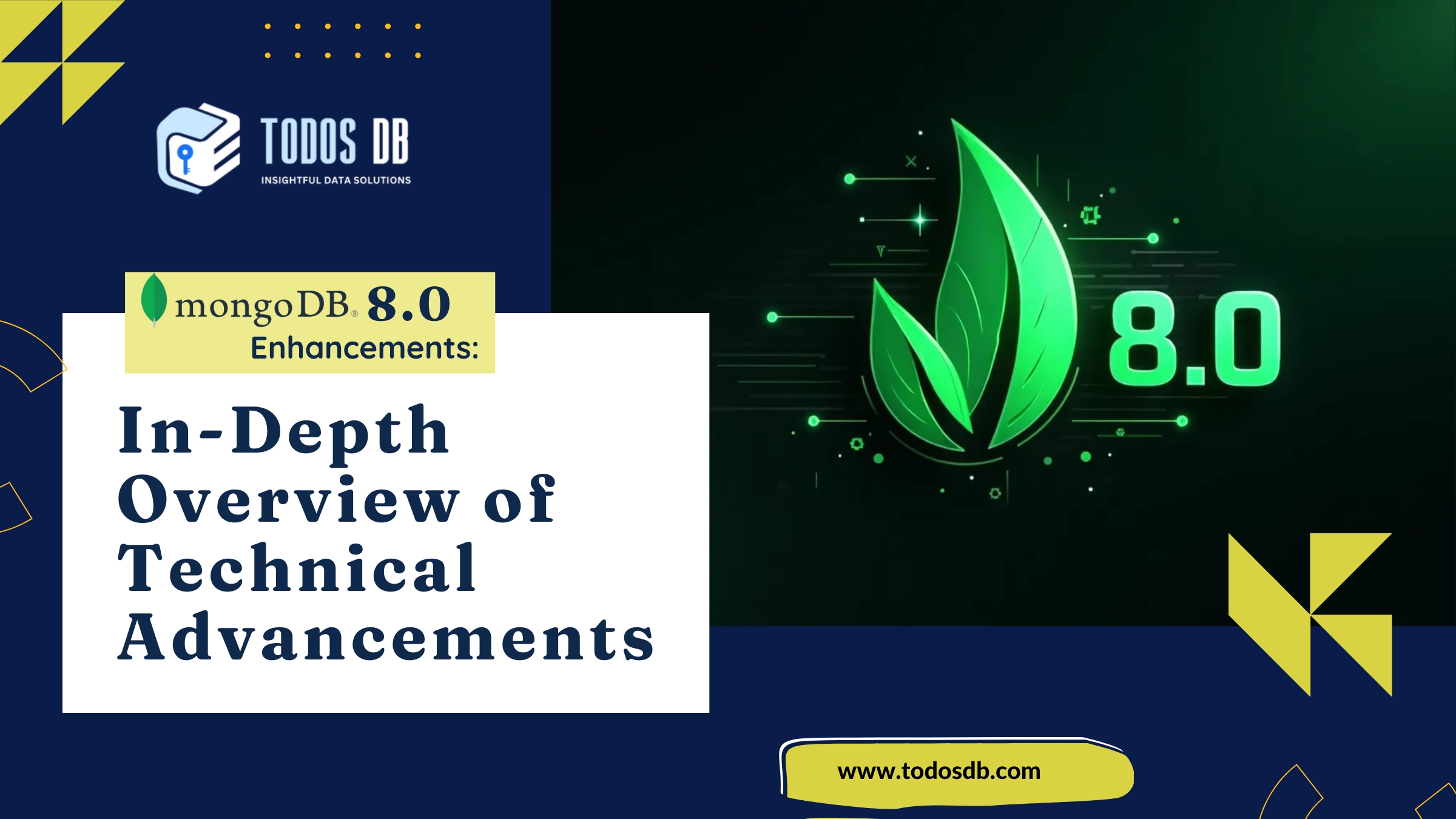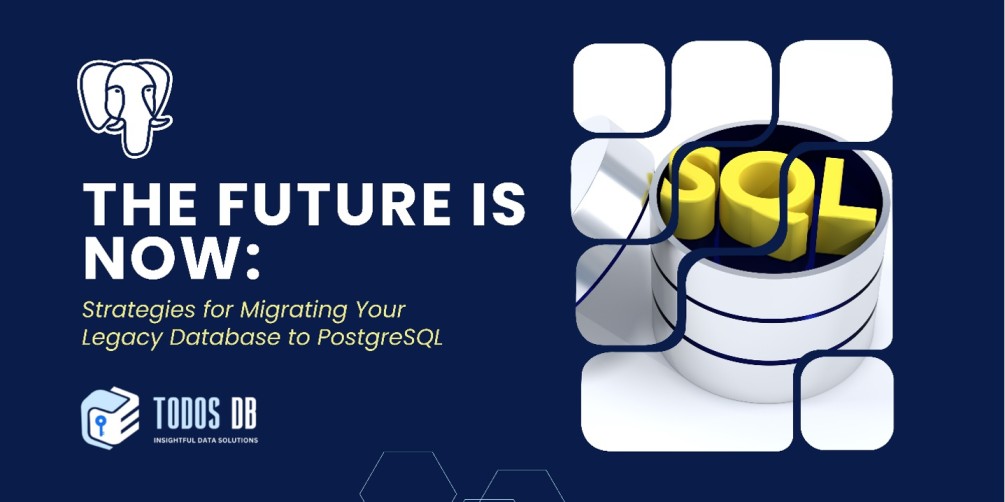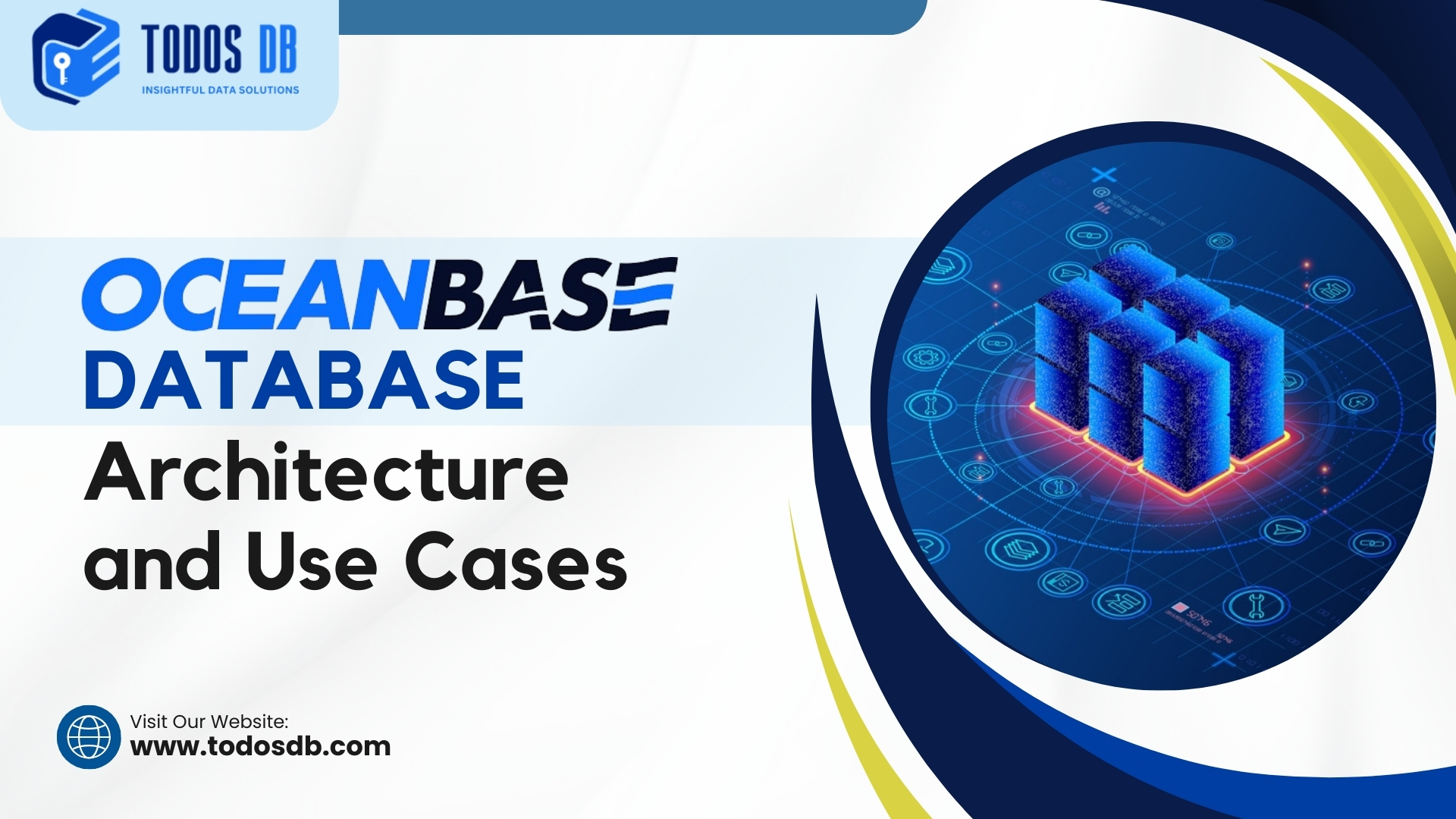MongoDB, a NoSQL database, has evolved to become one of the leading solutions for managing data in modern applications. Its flexibility, scalability, and high availability make it an ideal choice for handling unstructured and semi-structured data. The release of MongoDB 8.0 brings numerous enhancements that further optimize its performance, security, and usability.
This article dives deep into the technical improvements in MongoDB 8.0, exploring each new feature in detail and providing technical examples to demonstrate how these changes benefit developers, database administrators, and enterprises.
1. Performance Enhancements in MongoDB 8.0
MongoDB 8.0 introduces several performance-related improvements, which significantly enhance data processing and retrieval speeds, even with large datasets or complex queries.
- Aggregation Pipeline Optimization

MongoDB’s aggregation framework, while powerful, can suffer from performance degradation with complex queries or large datasets. In MongoDB 8.0, several optimizations have been made to the aggregation pipeline to improve its throughput and reduce latency. One of the most notable improvements is in the handling of large-scale joins and group operations.
- Optimized $lookup: The $lookup stage in aggregation performs a join between collections. Historically, $lookup was slow when working with large datasets due to the need to scan entire collections. MongoDB 8.0 introduces more efficient join algorithms that reduce the number of scans required. The engine can now push down more operations to the target collection, reducing the data loaded into memory.
- Pushdown Filters: MongoDB 8.0 improves the ability to push down filters earlier in the aggregation pipeline. This reduces the amount of data processed at each stage, significantly improving performance. In practice, MongoDB will now apply $match filters as early as possible to reduce the dataset size before performing $group, $sort, and $project operations.
Example of Aggregation Pipeline Optimization:
db.orders.aggregate([
{ $match: { status: 'shipped' } },
{ $lookup: {
from: 'customers',
localField: 'customerId',
foreignField: '_id',
as: 'customerDetails'
}},
{ $unwind: '$customerDetails' },
{ $group: {
_id: '$customerDetails.country',
totalSales: { $sum: '$totalAmount' }
}},
{ $sort: { totalSales: -1 }}
]);In MongoDB 8.0, the aggregation operation like the one above is processed more efficiently, making complex data transformations faster, even with large volumes of data.
2. Optimized Indexing Mechanisms

Indexes are critical for improving query performance in MongoDB. The introduction of advanced indexing mechanisms in MongoDB 8.0 brings improved query response times, especially for complex queries involving multiple fields. MongoDB now provides enhancements to compound indexes, geospatial indexes, and wildcard indexes.
- Wildcard Indexes: MongoDB 8.0 allows for wildcard indexing of fields that are dynamic or unknown ahead of time. This is particularly useful for unstructured data, where field names might not be known in advance. Wildcard indexes enable the creation of indexes for every field within a document, improving query performance without requiring manual index creation for each potential field.
Example of Creating a Wildcard Index:
db.products.createIndex({ "$**": 1 }) // Indexing all fields dynamically- Compound Index Enhancements: MongoDB 8.0 optimizes compound indexes by allowing more sophisticated combinations of index types, improving query speed when using multiple fields for filtering.

Example of Compound Index:
db.orders.createIndex({ status: 1, totalAmount: -1 })These index optimizations ensure that MongoDB 8.0 can handle queries more efficiently, even when dealing with highly dynamic or unstructured datasets.
2. Improved Multi-Document Transactions
MongoDB’s multi-document transactions, introduced in MongoDB 4.0, allow developers to execute multiple operations within a single, atomic transaction. MongoDB 8.0 significantly improves the efficiency and reliability of multi-document transactions, especially in distributed environments.

a. Transaction Retryable Reads
MongoDB 8.0 introduces retryable reads for multi-document transactions, which automatically retries read operations in the event of transient network failures. This feature minimizes disruptions to service during temporary failures or brief connectivity issues, ensuring that operations remain consistent.
Retryable reads improve the robustness of applications by preventing the need for manual retries or error handling when transient issues occur.
Example of Retryable Read with Multi-Document Transaction:
const session = db.getMongo().startSession();
session.startTransaction();
try {
const user = db.users.findOne({ _id: 123 }, { session });
const updatedOrder = db.orders.updateOne(
{ _id: orderId },
{ $set: { status: 'shipped' } },
{ session }
);
session.commitTransaction();
} catch (error) {
session.abortTransaction();
throw error;
} finally {
session.endSession();
}In this example, if a transient error occurs during the read operation on the users collection, MongoDB will automatically retry the read without user intervention.
c. Distributed Transaction Improvements

Distributed transactions are an essential feature for applications that require transactional consistency across replica sets and sharded clusters. MongoDB 8.0 enhances distributed transactions by reducing the overhead associated with cross-shard or cross-replica-set operations, ensuring faster and more efficient coordination between shards.
These improvements make MongoDB 8.0 an ideal choice for applications deployed in distributed environments, as they maintain strong consistency across geographically distributed nodes.
3. Advanced Security Features
a. Field-Level Encryption Enhancements

MongoDB 8.0 expands on the field-level encryption capabilities introduced in previous versions, providing enhanced security for sensitive data. MongoDB now supports the encryption of specific fields within documents, ensuring that even if the database is compromised, sensitive information remains protected.
MongoDB 8.0’s field-level encryption is faster and more flexible, with improved key management, and it integrates more easily with external key management systems (KMS).
Example of Encrypting Sensitive Data:
db.users.insertOne({
name: "Jane Doe",
ssn: encryptField("987-65-4321", "encryptionKey")
});This encryption feature ensures that sensitive fields, such as Social Security numbers or credit card details, are encrypted both at rest and in transit.
b. Auditing and Compliance Enhancements

With MongoDB 8.0, database administrators can perform detailed audits of database access and modifications. The audit logs track access to sensitive data, ensuring compliance with regulatory requirements such as GDPR, HIPAA, and PCI DSS. MongoDB now provides enhanced auditing features, including the ability to track read, write, and administrative operations with more granularity.
4. Sharding and Horizontal Scaling

Sharding is the practice of distributing data across multiple servers or clusters to improve scalability. MongoDB 8.0 makes significant improvements to sharding, making it more efficient and easier to manage.
a. Sharding Performance Optimizations
In MongoDB 8.0, sharded clusters perform better when handling operations that span multiple shards. The new sharding algorithms reduce the overhead of joining data across shards, especially in high-write environments. Operations like aggregations that span multiple shards now execute more quickly, reducing the potential for performance bottlenecks.
b. Live Resharding

One of the most notable features of MongoDB 8.0 is live resharding. In previous versions, changing the shard key of a collection required downtime, as the data had to be migrated between shards. MongoDB 8.0 allows for live resharding, where the shard key can be changed dynamically without interrupting the availability of the database.
Live resharding enables developers to adjust their sharding strategy as data access patterns evolve over time, providing greater flexibility for growing applications.
Example of Live Resharding:
db.orders.shardCollection("mydb.orders", { "customerId": 1 });In MongoDB 8.0, the resharding process occurs in the background, ensuring minimal disruption to application performance.
5. Developer Experience Improvements
MongoDB 8.0 focuses not only on performance and scalability but also on improving the developer experience. This version introduces several new features that streamline the development process, making it easier to work with MongoDB’s powerful features.
a. Simplified Query Syntax
MongoDB 8.0 introduces syntax enhancements that make queries more intuitive and easier to write. For example, the introduction of new operators and query expression improvements makes it easier for developers to express complex queries without writing verbose or difficult-to-maintain code.
b. Enhanced Change Streams

MongoDB’s change streams allow applications to listen to real-time changes in the database. MongoDB 8.0 expands this feature to support more advanced use cases, such as tracking schema changes and indexing updates. This is particularly useful for building event-driven architectures and real-time applications.
Example of Listening to Change Streams:
const changeStream = db.orders.watch();
changeStream.on('change', (change) => {
console.log(change);
});MongoDB 8.0 improves the performance of change streams and provides a more reliable mechanism for handling high-throughput events.
6. Cloud-Native Capabilities
MongoDB Atlas Improvements

MongoDB 8.0 brings several improvements to MongoDB Atlas, MongoDB’s fully managed cloud database service. Atlas now features more sophisticated auto-scaling capabilities, allowing clusters to automatically scale based on workload demands. In addition, MongoDB 8.0 brings better support for hybrid cloud environments, allowing users to seamlessly deploy and manage MongoDB clusters across multiple cloud providers and on-premises infrastructures.
Conclusion
MongoDB 8.0 introduces significant improvements across performance, security, scalability, and developer experience. With enhancements in aggregation, indexing, multi-document transactions, and field-level encryption, it offers faster, more efficient data processing and stronger security. Live resharding and better cloud-native capabilities provide seamless scalability for modern applications. MongoDB 8.0 strengthens its position as a powerful, flexible NoSQL database, making it an ideal choice for businesses needing high-performance, reliable, and secure data management.



